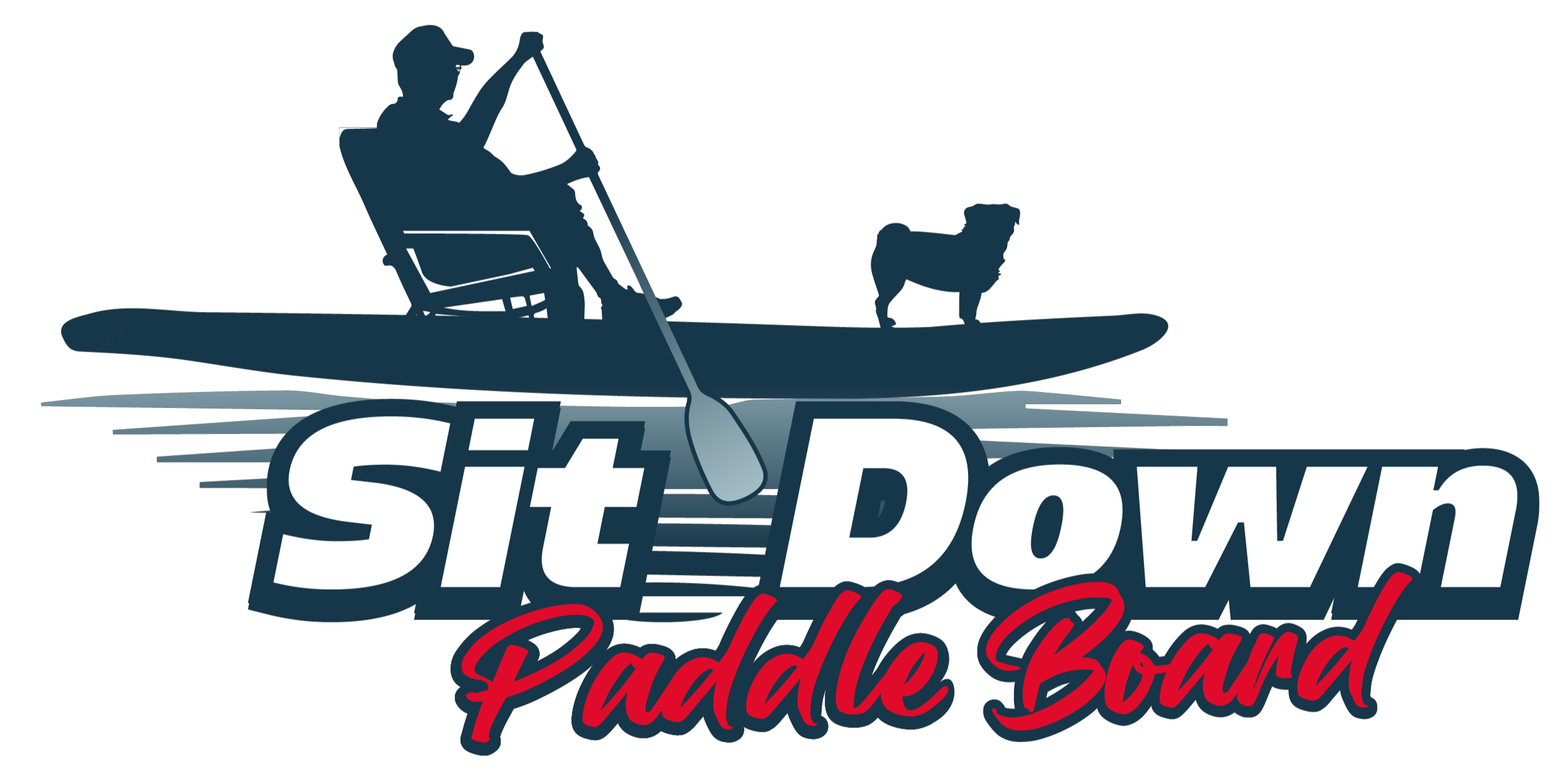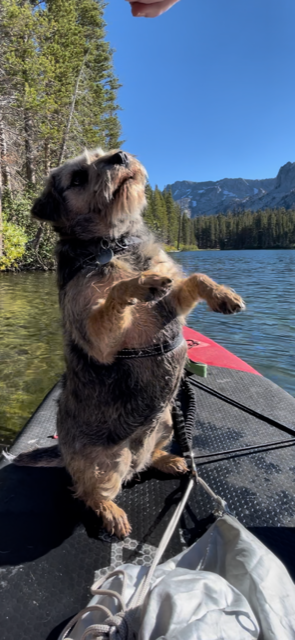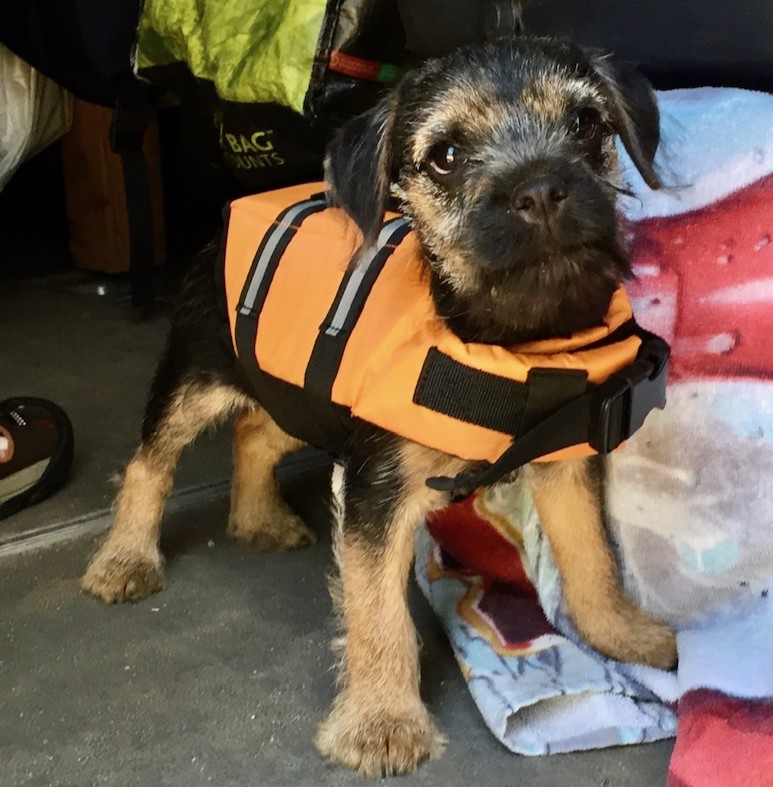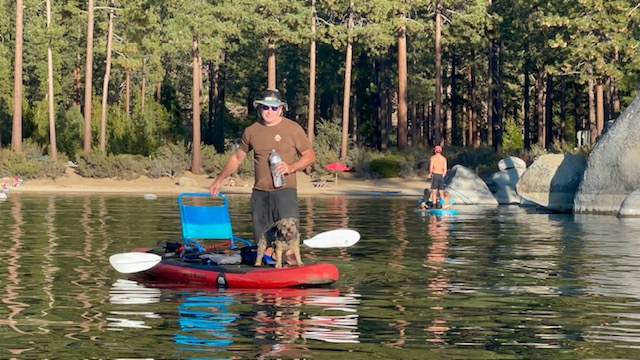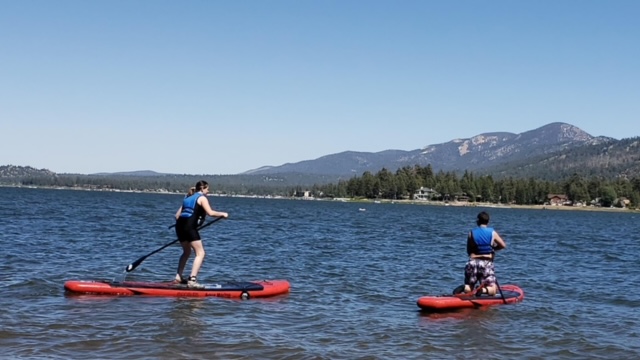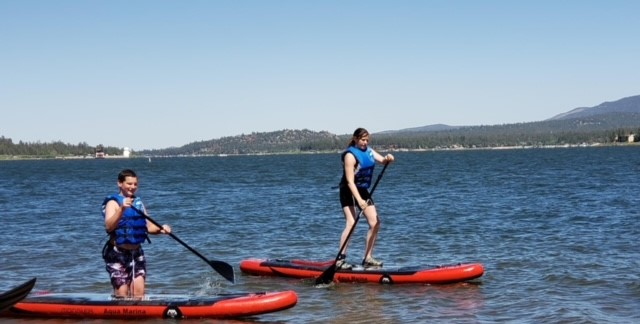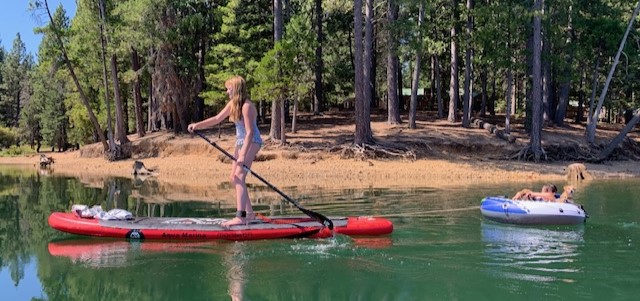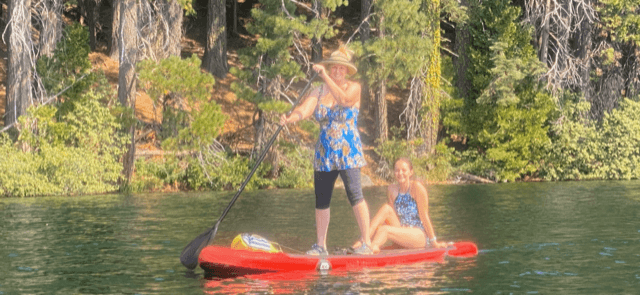The 5 secrets to Dog Paddle Boarding Training
The 5 secrets to Dog Paddle Boarding Training. Here are the most important things to do when introducing your dog to paddle boarding that will ensure that both you and your dog have a good experience and ensure that you will enjoy years of paddle boarding together.
- Start with a slow and gradual introduction
- Do some basic training and practice safety precautions
- Practice in shallow water
- Make it fun
- Give your dog comfort breaks
Why it is important to train your dog to paddle board
Before we dive into how to implement the top 5 paddle board dog training tips, lets quickly review WHY it is important to spend some time training them. Dog paddle boarding training is important for several reasons:
Safety
The primary reason is safety. Watersports can be dangerous, especially for dogs who aren't familiar with water or swimming. Training ensures that your dog knows how to behave on the paddleboard, how to get on and off safely, and what to do in the event of a fall.
Comfort
A well-trained dog will feel more comfortable and confident on the paddleboard, leading to a more enjoyable experience for both you and your pet. Dogs, like humans, appreciate knowing what's expected of them - it helps reduce stress and anxiety.
Enjoyment
Training can be an enjoyable bonding experience in and of itself. It's an opportunity to spend quality time with your pet, which reinforces the human-pet relationship. Plus, a trained dog can become a great companion for your watersport adventures.
Good Manners
Training your dog also ensures good manners while you're out in public waters. A dog that's jumping off the board uncontrollably, barking excessively, or causing other disruptions isn't going to be welcomed in many public areas.
Physical Exercise
Learning new skills can provide excellent mental and physical stimulation for dogs. Training your dog to paddleboard is no different and can improve their balance, strength, and overall fitness.
In conclusion, dog paddle boarding training is mostly about safety and enjoyment. It's about making sure both you and your pet are having a good and safe time while enjoying the water together.
Let's dive into the details regarding the 5 Secrets to Dog Paddle Boarding Training!
Purchase a life jacket for your dog at least a couple weeks before you start and let your dog get used to wearing the life jacket before venturing out onto the water. The life jackets we recommend on our Paddle Boarding Accessories page all have a place on the back for you to clip on a leash. The easiest way to allow your dog to get used to the life jacket is to put it on them, attach a leash and take them for a brisk walk went it is cool outside (so they don't get too hot).
We also recommend you read all the steps for dog paddle boarding training and then based on the size and disposition of your dog you can pick the time and place to start. We recommend a warm, calm time of day to start in an area without too many distractions. Also, be sure you are fueled up and in a patient mood.
You are in good hands here... Julie has been training dogs for years. Silli, featured in this article, has many American Kennel Club titles including a Tricks title, Obedience title, Canine Good Citizen title and is a Grand Champion Bronze. You can learn more about her and the rest of the pack at SilliBorderTerrier.com as well as see her in action on TikTok, Instagram and YouTube @SilliBorderTerrier.
#1 - Ease onto the Board, Paws First – Start with a Slow and Gradual Introduction
Just as you wouldn't appreciate being tossed into deep waters without any prep, neither would Rover. Familiarize your doggie paddle enthusiast with the board on secure, stable ground first. Allow your four-legged friend to thoroughly investigate this peculiar new object with all their canine curiosity. Permit them to give it a deep sniff-around. Encourage them to with a "paws-on" exploration.
Start by merely leading them onto it. Mark their progress with happy praises and throw in a few drool-worthy treats for good measure. It's like playing peekaboo with a toddler, but with Rover and a paddleboard!
#2 - Command Central and Safety Audits – AKA Training and Safety Precautions
Having your dog obey basic commands is crucial during paddleboarding sessions. Ensuring they know and follow commands like "sit", "stay", and "off" can add a layer of safety while on the board. A dog’s life jacket is as important on this water adventure as your dog itself. You never know when a potential danger could arise - a sudden fall, a high tide, or an unexpected current sweep. Even if your furry friend is an expert swimmer, a life jacket can be the saving grace in potentially hazardous situations.
Discipline isn't just for the ‘Dog Whisperer’ on TV. Basic commands like ‘sit’, 'stay', and 'off' are as essential as peanut butter on a PB&J sandwich. While you’re sailing on high seas, bringing order to potential chaos is vital. It's like you’re the captain of your ship, and Rover is your first mate taking heed of your orders!
Don't overlook the importance of a dog life jacket. It's not merely a cute accessory for Rover to flaunt his beach body look! It's as critical as airbags in a car; you hope you'll never need it, but if there's a minor hiccup or a major ‘Titanic’ situation, it can be a vital lifesaver. Even if Rover can give Toto the Dolphin a run for his money, a reliable dog life jacket is a non-negotiable safety standard. See our accessory page for the lowdown on life jackets, leashes, harnesses and other important accessories as well as our best paddle board with dog article.
#3 - Hello from the Shallow Side – Start Small in Shallow Waters
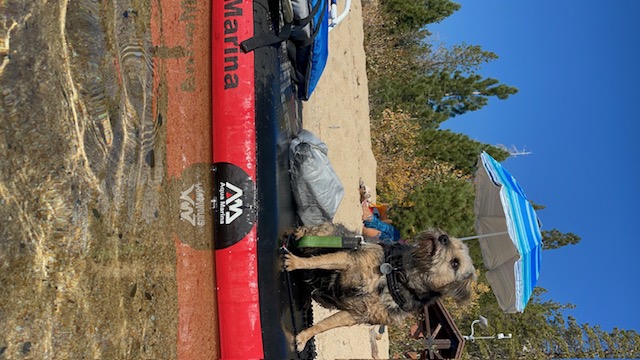 Silli waiting patiently to go paddle boarding at Sand Harbor Beach, Lake Tahoe, Nevada
Silli waiting patiently to go paddle boarding at Sand Harbor Beach, Lake Tahoe, NevadaIt's recommended that the first few paddleboarding sessions are conducted in calm and shallow waters. Let your pooch get a feel of the paddle board's stability and movement in the water.
You can tightly hold the board to minimize rocking while your pet practices climbing on and off the board. This can reinforce their confidence being on the paddle board while it floats, preparing them for future deep-water ventures.
Just as Rome wasn't built in a day, dog paddle boarding training doesn't happen overnight. Transforming your fur baby into an accomplished paddleboarder is a gradual process. Put your board into the shallow end of a swimming pool or lake and let them practice their sea-legs there first. Your dapper doggo boarding and de-boarding with ease is essential before you both set sails for deeper waters to seek uncharted territories.
After your dog seems to be getting used to being on the board in the water, go ahead and climb on. If the water is smooth, it is time to take a little paddle around. We recommend that you stay seated for this first paddle if possible, because your dog may jump around a little and cause you to fall. You want your dog to get comfortable with both of you on the board before introducing any more excitement! Regardless, most dogs will feel more comfortable with you close by in licking distance, versus standing up.
One of the many benefits that we have found from paddle boarding sitting down with a seat is that we can be super relaxed as well as stable and well braced when we have a dog on the board with us... especially a large dog.
#4 - All Play and No Work – Incorporate an Element of Amusement
Dogs, akin to their human companions, love a good time! Translating their paddleboarding experience into a fun-filled game can work wonders in ensuring they enjoy it. Bring along a beloved toy, engage in a game of fetch over the water (provided the region's regulations permit it), or let them amuse themselves by jumping off the board into the water (ensuring safety with their life jacket and the calm, shallow water).
Transforming paddleboarding into an exhilarating playtime can make your dog look forward to these sessions. Dogs are basically the embodiment of ‘Carpe Diem', seizing a play opportunity in every situation! Rover might fancy himself as a superior version of Michael Phelps or maybe Mo Farah on paddleboards! So, accompany your board journey with his favorite squeaky toy or introduce a game of fetch in the water (provided the area's rules give you a green flag).
However, remember that running on a paddleboard can lead to some unexpected dips in the ocean, so beware of that sudden splash, else the fish might have an unexpected spectator underwater!
#5 - Barking Breaks and Comfort Cruise – Prioritize your Pet’s Comfort
Ensure Rover has enough hydration, shade, and breaks to minimize any discomfort. Maybe it's a perfect time for you to whip out a teeny-tiny umbrella to shade yourselves and share a dog-friendly popsicle.
Observing Rover is as important as sunblock in a beach bag. Look out for any signs of distress or discomfort. If Fido looks like he's recreated 'Pirates of the Caribbean’ already and wants to return to shore, then shelve your Indiana Jones spirit for another day. Even Baywatch had lifeguards to ensure safety first!
The ‘Dog-tanic’ doesn’t always have to be a disaster on its maiden voyage. Each dog's got its own doggie style and disposition. Rover might fancy himself the next canine ‘007: The Spy Who Sniffed Me’, surveying fellow paddleboarders stealthily. Or maybe Fido’s the ‘Canine Crusader’, the furball who's all muscles – ready to dive into the water as a canine cannonball, given half a chance!
There's as much possibility as there are waves in the ocean! So, pack a sense of adventure with a heavy dose of safety, a sprinkle of patience, and don’t forget to add a dash of pupper love. Paddleboarding with your pooch can make ‘Waves’ in your story, printed not just on your memory, but on your heart and soul as well. So, gear up, get on board, and mutiny on canine bounty awaits!
There you have it... the 5 Secrets to Dog Paddle Boarding Training. We wish you and your dog happy paddling!
We hope to see you out on the water!
